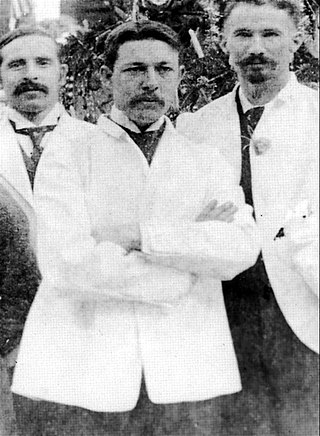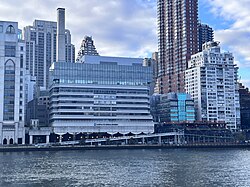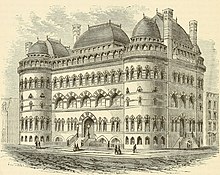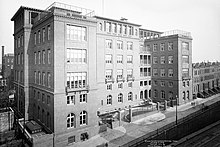
Arthritis is a term often used to mean any disorder that affects joints. Symptoms generally include joint pain and stiffness. Other symptoms may include redness, warmth, swelling, and decreased range of motion of the affected joints. In some types of arthritis, other organs are also affected. Onset can be gradual or sudden.
Rheumatology is a branch of medicine devoted to the diagnosis and management of disorders whose common feature is inflammation in the bones, muscles, joints, and internal organs. Rheumatology covers more than 100 different complex diseases, collectively known as rheumatic diseases, which includes many forms of arthritis as well as lupus and Sjögren's syndrome. Doctors who have undergone formal training in rheumatology are called rheumatologists.

Orthopedic surgery or orthopedics is the branch of surgery concerned with conditions involving the musculoskeletal system. Orthopedic surgeons use both surgical and nonsurgical means to treat musculoskeletal trauma, spine diseases, sports injuries, degenerative diseases, infections, tumors, and congenital disorders.
The National Institute of Arthritis and Musculoskeletal and Skin Diseases (NIAMS) is one of the institutes and centers that make up the National Institutes of Health, an agency of the United States Department of Health and Human Services (HHS).

William Bradley Coley was an American bone surgeon and cancer researcher best known for his early contributions to the study of cancer immunotherapy, specifically causing infection as a way to fight cancer, a practice used as far back as 1550 BC. His work was not proven effective in his lifetime, and today Coley's toxins are known to be both ineffective and potentially harmful. Coley is nevertheless recognized as the Father of Cancer Immunotherapy for his contributions to the science.
Childhood arthritis is an umbrella term used to describe any rheumatic disease or chronic arthritis-related condition which affects individuals under the age of 16. Most types are autoimmune disorders.
Betty Diamond is an American physician and researcher. She is director of the Institute of Molecular Medicine at Northwell Health's Feinstein Institute for Medical Research in Manhasset, NY. She was elected a member of the National Academy of Sciences in 2022.
Michael D. Lockshin is an American professor and medical researcher. He is known for his work as a researcher of autoimmune diseases, with focus on antiphospholipid syndrome and lupus. He is Professor Emeritus of Medicine and the Director Emeritus of the Barbara Volcker Center for Women and Rheumatic Disease at Hospital for Special Surgery. He retired from HSS on January 31, 2023.

Lupus, technically known as systemic lupus erythematosus (SLE), is an autoimmune disease in which the body's immune system mistakenly attacks healthy tissue in many parts of the body. Symptoms vary among people and may be mild to severe. Common symptoms include painful and swollen joints, fever, chest pain, hair loss, mouth ulcers, swollen lymph nodes, feeling tired, and a red rash which is most commonly on the face. Often there are periods of illness, called flares, and periods of remission during which there are few symptoms.

Hughes–Stovin syndrome (HSS) is a rare autoimmune disorder often described as inflammation in relation to blood vessels, a form of vasculitis. It is not associated with any known cause and is typically characterized by multiple aneurysms in pulmonary arteries and deep vein thromboses. It is named after the two British physicians, John Patterson Hughes and Peter George Ingle Stovin, who first described it in 1959. HSS is presumed to be a rare variant of Behçet's disease, which entails more general problems with the circulatory system. Due to its clinical similarity with Behçet's disease, it has also been referred to as 'Incomplete Behçet's disease.' Most patients are young adult males between the age of 20–40. Common clinical presentations include fever, cough, dyspnea and hemoptysis. Radiological features are similar to those of Behçet's disease.

The University Orthopaedic Center is the only full-service specialty center of its kind in the Intermountain West, including services in joint reconstruction, sports medicine, pediatric orthopaedics, spinal disorders, hand, foot and ankle, trauma, musculoskeletal oncology, shoulder and elbow, and physical therapy.
John Robert Cobb (1903–1967), was an American orthopedic surgeon who invented the eponymous Cobb angle, the preferred method of measuring the degree of scoliosis and post-traumatic kyphosis.
Matthew H. Liang is a physician specializing in general internal medicine and rheumatology, Professor of Medicine at Harvard Medical School, Professor of Health Policy and Management at Harvard School of Public Health, and the Director Emeritus of Special Projects of the Robert B. Brigham Arthritis and Musculoskeletal Diseases Clinical Research Center which he founded. He is a founding faculty of the Division of General Internal Medicine and Primary Care at the Brigham and Women's Hospital and a founding faculty of the Clinical Effectiveness Program at the Harvard School of Public Health and is a Study Director in the Veterans Administration Cooperative Studies Program.
John H. Healey is an American cancer surgeon, researcher, and expert in the surgical treatment of benign and malignant bone tumors and other musculoskeletal cancers. He serves as Chair of the Orthopaedic Service and Stephen P. McDermott Chair in Surgery at Memorial Sloan-Kettering Cancer Center (MSKCC), as well as Professor of Surgery at Weill Cornell Medical College, in New York, NY.
William Edward Gallie was a Canadian medical educator and orthopedic surgeon.
Oheneba Boachie-Adjei is a Ghanaian orthopaedic surgeon. He specializes in spinal reconstruction and the treatment of kyphosis and scoliosis. He is professor of orthopaedic surgery at Weill Cornell Medical College in New York City, in the United States, and is an attending orthopaedic surgeon at Hospital for Special Surgery, at New York-Presbyterian Hospital and at Memorial Sloan-Kettering Cancer Center, all in New York City. From 1972 to 1976 he studied at Brooklyn College, Brooklyn, New York, in the United States, where he completed a BS degree summa cum laude. He then studied medicine at the Columbia University College of Physicians and Surgeons.

David B. Levine is an orthopaedic surgeon, hospital administrator, professor and historian of medicine who has held positions since 1961 at the Hospital for Special Surgery in New York City, New York.
Steven B. Haas is chief of the Knee Service at Hospital for Special Surgery (HSS) and has developed multiple innovative surgical techniques and instrumentations to improve and facilitate knee replacements. Haas has been awarded numerous patents for his initiatives. One of Haas's most significant contributions to knee surgery was developing the Minimally Invasive Knee Replacement, which allowed patients to have much smaller scars and speedier recoveries. Haas has been listed on New York magazine's annual "Best Doctors in New York" list since 2007 and has more than 100 orthopedics-related publications. He travels to present on topics pertaining to knee surgery.
Philip Duncan Wilson Jr. (1920–2016) was an orthopedic surgeon who brought total hip replacement surgery to the Hospital for Special Surgery in 1967. He started at the Hospital for Special Surgery in 1948, and served as the Surgeon-in-Chief from 1972 to 1989. He served as the President of the American Academy of Orthopaedic Surgeons in 1972.

Dr. Eugene Bishop or E.B. Mumford (1879-1961) was an American orthopedic surgeon, founder, and president of the American Academy of Orthopedic Surgeons. Mumford was known for his pioneering research of arthritis, joint stiffness, and creation of distal clavical excision or acromioplasty commonly known as The Mumford Procedure.













